Generation
We rely on a mix of wind, water, coal and biomass to generate power for our customers. Minnesota Power continues to seek out more sources of renewable energy and has moved from an energy supply that was about 5 percent renewable in 2005 to one that is more than 50 percent renewable today. We’re the first Minnesota utility to reach the 50 percent milestone.
Click a fuel type below to view our power generation systems
-
Hydro
-
Thermal
-
Wind
-
Biomass
-
Solar

Blanchard Hydro Station
Location: The Mississippi River near Royalton, in Morrison County, Minn.
Description: Opened in 1925, the station has three generators and taps into a head (vertical distance the water travels to the turbines) of 45 feet.
Power production capability: 18 megawatts.
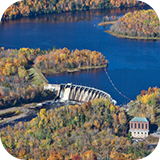
Fond du Lac Hydro Station
Location: On the St. Louis River.
Description: Built in 1923, the station has one generator that taps into a head of 80 feet.
Power production capability: 12 megawatts.
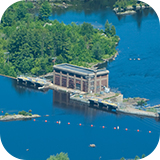
Knife Falls Hydro Station
Location: The St. Louis River in Carlton County, Minn.
Description: The station was built in 1921. It has three generators and taps into a head of 18 feet.
Power production capability: 2.4 megawatts.
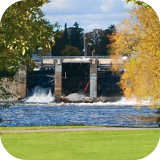
Little Falls Hydro Station
Location: The Mississippi River in the town of Little Falls in Morrison County.
Description: Built in 1887, the station has six generators and taps into a head of 23 feet. The original dam built at this site was washed out in the 1850s. Minnesota Power acquired the Little Falls station in 1923.
Power production capability: 4.9 megawatts.
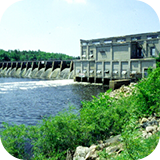
Pillager Hydro Station
Location: The Crow Wing River in Morrison County, Minn.
Description: Built in 1917, the station has two generators and taps into a head of 20 feet.
Power production capability: 1.6 megawatts.
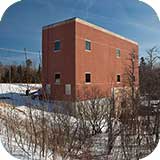
Prairie River Hydro Station
Location: The Prairie River north of Grand Rapids, Minn.
Description: The hydro station was built in 1919 by Itasca Paper Co. and was purchased by Minnesota Power in 1982. It has two generators and taps into a head of 35 feet.
Only the shell of the hydro station remained after a devastating fire in 2008. The station rebuild includes a new powerhouse, refurbishment of the Unit 1 turbine and installation of new generators.
Power production capability: 1.1 megawatts.
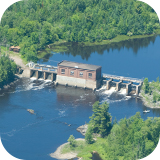
Scanlon Hydro Station
Location: The St. Louis River in Carlton County, Minn.
Description: Built in 1922, the station has four generators and taps into a head of 15 feet.
Power production capability: 1.6 megawatts.
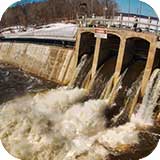
Sylvan Hydro Station
Location: The Crow Wing River about 11 miles northwest of Brainerd, Minn.
Description: The station has three generators and taps into a head of 21 feet.
Power production capability: 1.8 megawatts.
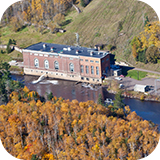
Thomson Hydro Station
Location: The St. Louis River in Jay Cooke State Park.
Description: Thomson is Minnesota Power’s largest hydroelectric plant and the largest hydro facility in Minnesota. The concrete dam is a fifth of a mile long, 38 feet high and 42 feet thick at the base. Its head is 370 feet. Thomson began generating power in 1907.
Power production capability: 70 megawatts.

Winton Hydro Station
Location: The Kawishiwi River near Ely, Minn.
Description: The concrete dam includes a 2,983-acre reservoir comprising Garden, Farm, South Farm and Fridays lakes, and the station has two generators that tap a head of 67 feet. The station has been operating since the 1920s.
Power production capability: 4 megawatts.
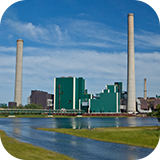
Boswell Energy Center
Location: Cohasset, Minn.
Description: : Boswell is Minnesota Power’s largest power plant. Units 1 and 2, at 65 megawatts each, were retired in 2018 as part of the company’s EnergyForward strategy. Unit 3, which came online in 1973, and Unit 4, online in 1980, continue to serve customers.
The plant is named for Clay C. Boswell, an engineer who served as president and chairman of the board during the 1950s and ’60s.
Fuel source: Low-sulfur, sub-bituminous coal from the Powder River Basin in Wyoming.
Power production capability: Unit 3 – 355 megawatts. Unit 4 – 585 megawatts.
Interesting features: Unit 4’s 26-story boiler converts water to steam, which is superheated to temperatures up to 1,000 degrees Fahrenheit. The Unit 4 stack is 600 feet tall.
Itasca Greenhouse, located next to Boswell Energy Center, uses water from the plant’s cooling towers to heat its greenhouses.

Hibbard Renewable Energy Center
Location: On the waterfront in West Duluth
Description: Two units burn wood industry byproducts to generate electricity when needed to meet market demand and ensure regional reliability. About 90 percent of all ash produced at Hibbard is used as a soil amendment on area farmlands, reducing the amount of ash being landfill.
Fuel source: Mixture of biomass and coal.
Power production capability: 48 megawatts.

Laskin Energy Center
Location: On Colby Lake between Aurora, Minn., and Hoyt Lakes, Minn.
Description: What today is the Laskin Energy Center was initially built to power the earliest taconite processing facilities pioneering the revitalization of the Iron Range. It was originally called the Aurora Steam Electric Station; Hoyt Lakes did not yet exist. It was later renamed for Sylvester “Syl” Laskin, who managed Minnesota Power's Range Division during the plant's early years and ultimately rose to become president, chairman and CEO.
Construction of the plant in 1953 marked a major shift for Minnesota Power. Up until that time, except for one coal-fired plant on Duluth's waterfront, the company had been mainly a hydroelectric operation. In 2015, the plant was converted to burn natural gas.
Fuel source: Natural gas.
Power production capability: Units 1 and 2 – 55 megawatts each.
Interesting features: Next to the energy center is the 220-acre Laskin Energy Park, offering industrial building sites for new and expanding manufacturers.
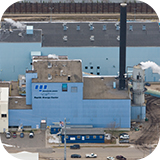
Rapids Energy Center
Location: Grand Rapids, Minn.
Description: The energy center has two steam turbines and two hydro units and provides Blandin Paper Co. with steam, compressed air and electricity. Wood waste burned in the plant comes from the paper mill and other local forest product companies.
Fuel source: Mixture of biomass and coal.
Power production capability: 28.6 megawatts.
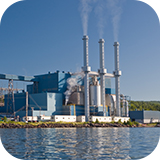
Taconite Harbor Energy Center
Location: Schroeder, Minn.
Description: Taconite Harbor consists of three 75-megawatt units. One unit was retired in 2015 and two units were idled in 2016 as part of Minnesota Power’s EnergyForward strategy. Should they be needed to maintain grid reliability, the idled units could be called back into service until they are officially retired in 2020.
Fuel source: Low-sulfur, sub-bituminous coal.
Power production capability: Originally 225 megawatts.
Interesting features: When operating, Taconite Harbor was the only Minnesota Power thermal generating facility that received its coal via ship. Boswell Energy Center receives coal by rail.
The facility was built as part of Erie Mining Co. and later purchased by LTV Steel. Minnesota Power acquired the facility in 2001.

Bison Wind Energy Center
Location: Oliver and Morton counties in south-central North Dakota.
Description: The wind farm was built in four phases—Bison 1, 2, 3 and 4—and is the largest wind farm in North Dakota. The energy from Bison is being delivered to Minnesota Power customers via a direct current transmission line stretching 465 miles from the Square Butte Substation in Center, N.D., to the company’s Arrowhead substation near Duluth, Minn.
Bison 1: Thirty-one wind turbines with a power production capability of 82 megawatts. Bison 1 was commissioned in early 2012.
Bison 2 and 3: Each project includes 35 turbines, which together have a capacity of 210 megawatts. Both Bison 2 and 3 were completed in 2012.
Bison 4: Sixty-four wind turbines with a capacity of 205 megawatts. Commissioning of Bison 4 was completed in 2015.
Power production capability: Together, the four phases of the Bison project have a capacity of nearly 500 megawatts.
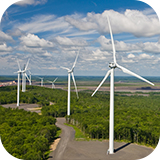
Taconite Ridge Wind Energy Center
Location: Located in central St. Louis County on property owned by United States Steel Corp. near its Minntac mine in Mountain Iron, Minn.
Description: Ten wind turbines, each capable of producing 2.5 megawatts of electricity. Each tower is 262 feet tall and each blade is 153 feet long. Taconite Ridge began operating in June 2008.
Power production capability: 25 megawatts.
Projects in development
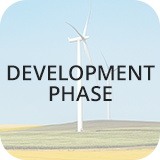
Longspur Wind
Location: Morton and Mercer counties in North Dakota.
Description: Up to 45 wind turbines across about 26,000 acres.
Power production capability: 200 megawatts.
Learn more about the Longspur project.

Hibbard Renewable Energy Center
Location: On the waterfront in West Duluth
Description: Two units burn wood industry byproducts to generate electricity when needed to meet market demand and ensure regional reliability. About 90 percent of all ash produced at Hibbard is used as a soil amendment on area farmlands, reducing the amount of ash being landfill.
Fuel source: Mixture of biomass and coal.
Power production capability: 48 megawatts.

Rapids Energy Center
Location: Grand Rapids, Minn.
Description: The energy center has two steam turbines and two hydro units and provides Blandin Paper Co. with steam, compressed air and electricity. Wood waste burned in the plant comes from the paper mill and other local forest product companies.
Fuel source: Biomass and coal.
Power production capability: 30 megawatts.
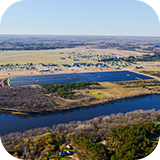
Camp Ripley
Location: Camp Ripley, a regional training facility for the Minnesota National Guard near Little Falls, Minnesota.
Description: The 80-acre array is the largest solar energy installation on military property in the state.
Power production capacity: 10 megawatts
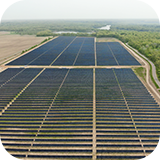
Sylvan Solar
Location: Near our Sylvan Hydro Station west of Brainerd, Minnesota.
Power production capacity: 15.2 megawatts
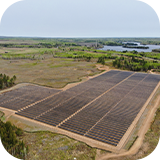
Laskin Solar
Location: Near Hoyt Lakes, Minnesota.
Power production capacity: 5.6 megawatts

Jean Duluth Solar
Location: Along Jean Duluth Road in Duluth, Minnesota.
Power production capacity: 1.6 megawatts
Projects in development
We are in the planning, design and purchasing phase for two large solar projects:

Boswell Solar
Location: Boswell Energy Center in Grand Rapids, Minnesota.
Power production capacity: 85 megawatts.
Projected completion: 2027.

Regal Solar
Location: Near Royalton, Minnesota.
Power production capacity: 119.5 megawatts.
Projected completion: 2027.
Community solar
We also operate a community solar garden with a 40-kilowatt array in Duluth and a 1-megawatt array in Wrenshall, Minnesota, and continue to explore community solar options.
View Minnesota Power's full Integrated Resource Plan and Appendices.


